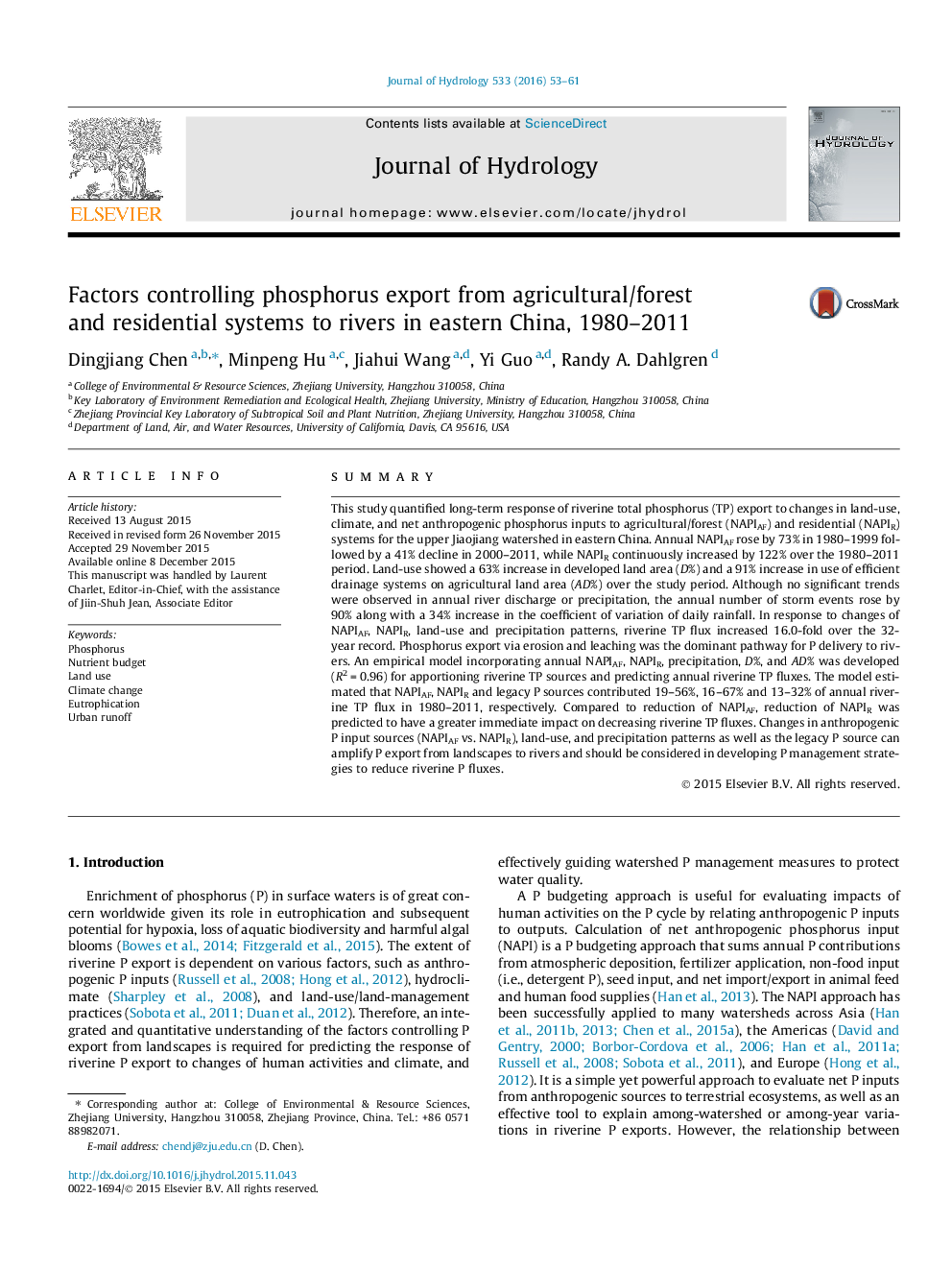| Article ID | Journal | Published Year | Pages | File Type |
|---|---|---|---|---|
| 6410453 | Journal of Hydrology | 2016 | 9 Pages |
â¢We separately estimate agricultural/forest (NAPIAF) and residential (NAPIR) P budgets.â¢Changes in P sources, land-use and precipitation patterns enhanced riverine TP export.â¢Erosion and leaching are major pathways for P delivery from landscapes to the river.â¢Riverine TP was from NAPIAF (19-56%), NAPIR (16-67%) and legacy P sources (13-32%).â¢NAPIR reduction would decrease riverine TP flux more than NAPIAF reduction.
SummaryThis study quantified long-term response of riverine total phosphorus (TP) export to changes in land-use, climate, and net anthropogenic phosphorus inputs to agricultural/forest (NAPIAF) and residential (NAPIR) systems for the upper Jiaojiang watershed in eastern China. Annual NAPIAF rose by 73% in 1980-1999 followed by a 41% decline in 2000-2011, while NAPIR continuously increased by 122% over the 1980-2011 period. Land-use showed a 63% increase in developed land area (D%) and a 91% increase in use of efficient drainage systems on agricultural land area (AD%) over the study period. Although no significant trends were observed in annual river discharge or precipitation, the annual number of storm events rose by 90% along with a 34% increase in the coefficient of variation of daily rainfall. In response to changes of NAPIAF, NAPIR, land-use and precipitation patterns, riverine TP flux increased 16.0-fold over the 32-year record. Phosphorus export via erosion and leaching was the dominant pathway for P delivery to rivers. An empirical model incorporating annual NAPIAF, NAPIR, precipitation, D%, and AD% was developed (R2Â =Â 0.96) for apportioning riverine TP sources and predicting annual riverine TP fluxes. The model estimated that NAPIAF, NAPIR and legacy P sources contributed 19-56%, 16-67% and 13-32% of annual riverine TP flux in 1980-2011, respectively. Compared to reduction of NAPIAF, reduction of NAPIR was predicted to have a greater immediate impact on decreasing riverine TP fluxes. Changes in anthropogenic P input sources (NAPIAF vs. NAPIR), land-use, and precipitation patterns as well as the legacy P source can amplify P export from landscapes to rivers and should be considered in developing P management strategies to reduce riverine P fluxes.
